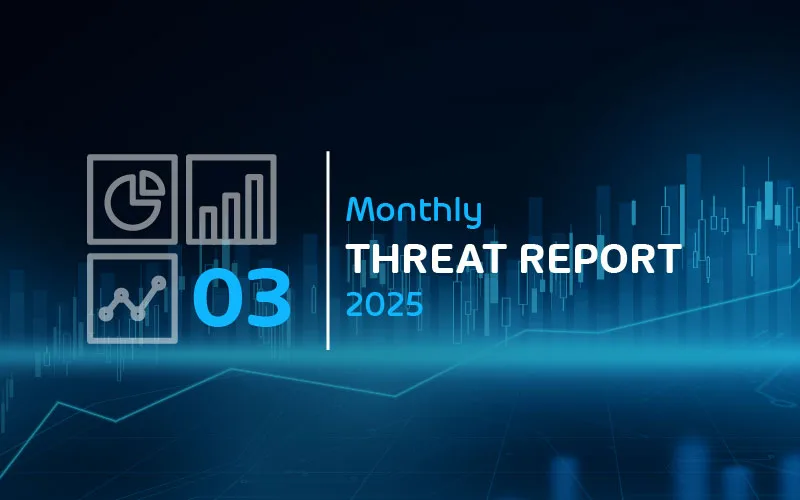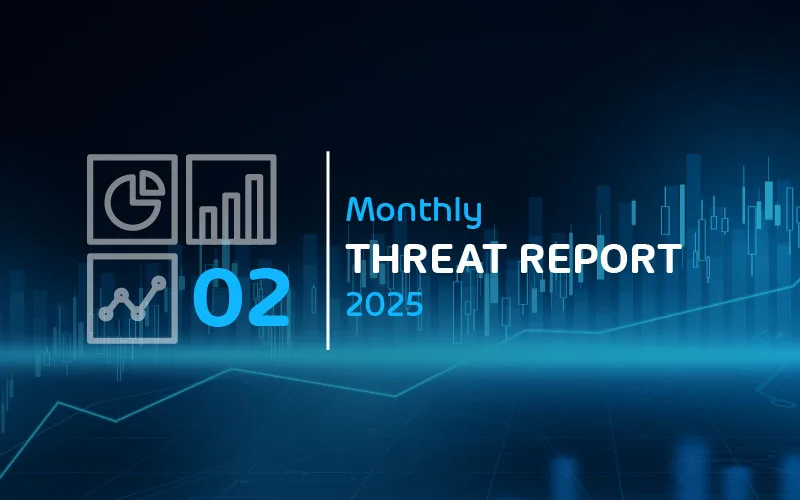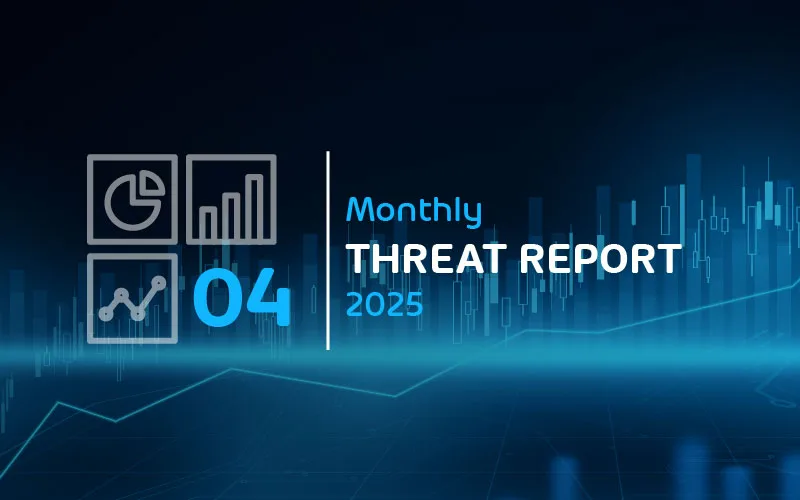

Email Threat Review October 2021
Executive Summary
This month, we saw a continuation of the large scale phishing attack against German banks that started at the end of last month.
Summary
In this installment of our monthly email threat review, we present an overview of the email-based threats observed in October 2021 and compare them to the previous month’s threats.
The report provides insights into:
- Unwanted emails by category
- File types used in attacks
- Industry Email Threat Index
- Impersonated company brands and organizations
- Ransomleaks
Unwanted emails by category
The following table shows the distribution of unwanted emails per category.
| Email category | % |
| Rejected | 80.92 |
| Spam | 13.50 |
| Threat | 4.68 |
| AdvThreat | 0.86 |
| Content | 0.03 |
The following time histogram shows the email volume per category per day.

The large spike in unwanted emails, around 2021-10-26, can be attributed to a monthly reoccurring sextortion scam email campaign.
Methodology
The listed email categories correspond to the email categories listed in the Email Live Tracking of Hornetsecurity’s Control Panel. So our users are already familiar with them. For others, the categories are:
| Category | Description |
| Spam | These emails are unwanted and are often promotional or fraudulent. The emails are sent simultaneously to a large number of recipients. |
| Content | These emails have an invalid attachment. The administrators define in the Content Control module which attachments are invalid. |
| Threat | These emails contain harmful content, such as malicious attachments or links, or they are sent to commit crimes like phishing. |
| AdvThreat | Advanced Threat Protection has detected a threat in these emails. The emails are used for illegal purposes and involve sophisticated technical means that can only be fended off using advanced dynamic procedures. |
| Rejected | Our email server rejects these emails directly during the SMTP dialog because of external characteristics, such as the sender’s identity, and the emails are not analyzed further. |
File types used in attacks
The following table shows the distribution of file types used in attacks.
| File type (used in malicious emails) | % |
| HTML | 37.3 |
| Archive | 25.8 |
| 13.1 | |
| Excel | 7.0 |
| Disk image files | 5.2 |
| Other | 4.2 |
| Executable | 3.4 |
| Word | 3.3 |
| Powerpoint | 0.4 |
| Script file | 0.1 |
Other file types not individually listed are email files (forwarded as .eml attachments), Windows desktop shortcut files (.lnk), Internet shortcut files (.url), Java Archive files (.jar), iCalendar files (.ics), vCard Files (.vcf), e-book file formats (.epub, .mobi), and many other even more exotic file formats. These are combined under “Other”.
The following time histogram shows the email volume per file type used in attacks per 7 days.

Industry Email Threat Index
The following table shows our Industry Email Threat Index calculated based on the number of threat emails compared to each industry’s clean emails received (in median).
| Industries | Share of threat in threat and clean emails |
| Education industry | 5.6 |
| Healthcare industry | 5.6 |
| Manufacturing industry | 5.5 |
| Research industry | 5.4 |
| Automotive industry | 4.8 |
| Media industry | 4.7 |
| Construction industry | 4.6 |
| Utilities | 4.4 |
| Mining industry | 4.1 |
| Transport industry | 4.0 |
The following bar chart visualizes the email-based threat posed to each industry.
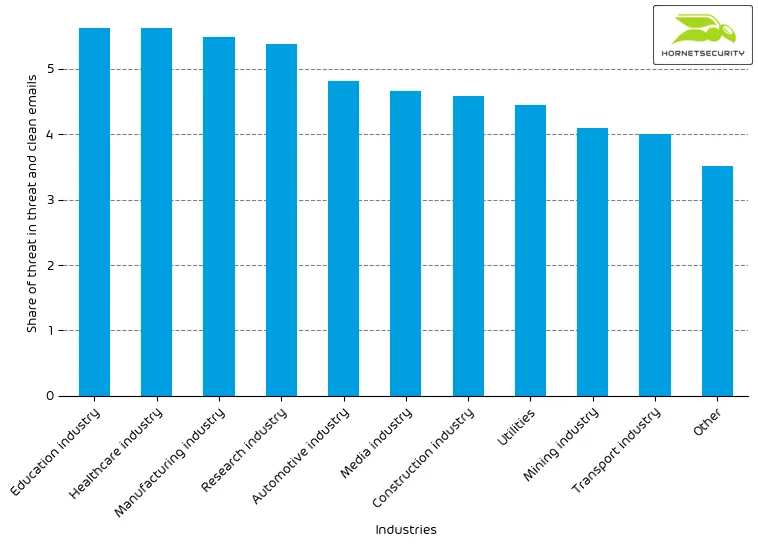
Methodology
Different (sized) organizations receive a different absolute number of emails. Thus, we calculate the percent share of threat emails from each organization’s threat and clean emails to compare organizations. We then calculate the median of these percent values for all organizations within the same industry to form the industry’s final threat score.
Impersonated company brands and organizations
The following table shows which company brands and organizations our systems detected most in impersonation attacks.
| Impersonated brand or organization | % |
| Sparkasse | 47.4 |
| Volks- und Raiffeisenbank | 17.7 |
| Other | 6.9 |
| Deutsche Post / DHL | 5.8 |
| Amazon | 5.4 |
| DocuSign | 4.4 |
| PayPal | 2.4 |
| UPS | 2.1 |
| 1.5 | |
| Fedex | 1.5 |
The following histogram shows the email volume for company brands and organizations detected in impersonation attacks per hour.
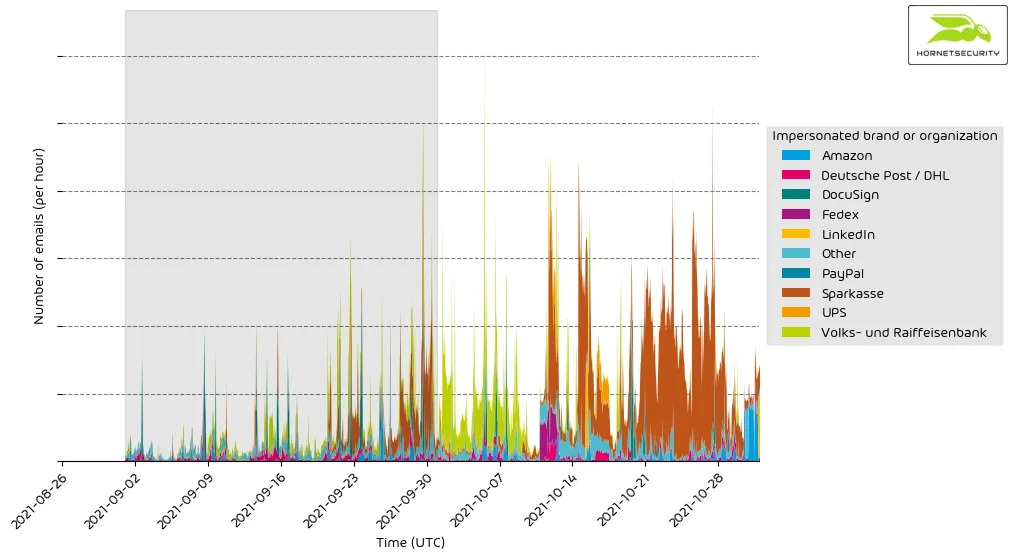
Here we see the continued impersonation of two German banking associations to spread phishing.
Ransomleaks
Threat actors continue to leak data stolen from ransomware victims to pressure them to pay for decrypting the files and not publishing sensible data. Our automated monitoring observed the following number of leaks on ransomware leak sites (not protected by CAPTCHAS):
| Leak site | Number of victim data leaks |
| Conti | 65 |
| Blackmatter | 44 |
| Pysa | 27 |
| Hive | 8 |
| Cuba | 7 |
| LV | 6 |
| REvil | 4 |
| Vice Society | 4 |
| Everest | 3 |
| Atomsilo | 2 |
| Bonaci | 2 |
| Xing Team | 2 |
| RansomEXX | 1 |
The following bar chart visualizes the number of victim data leaks per leak site.
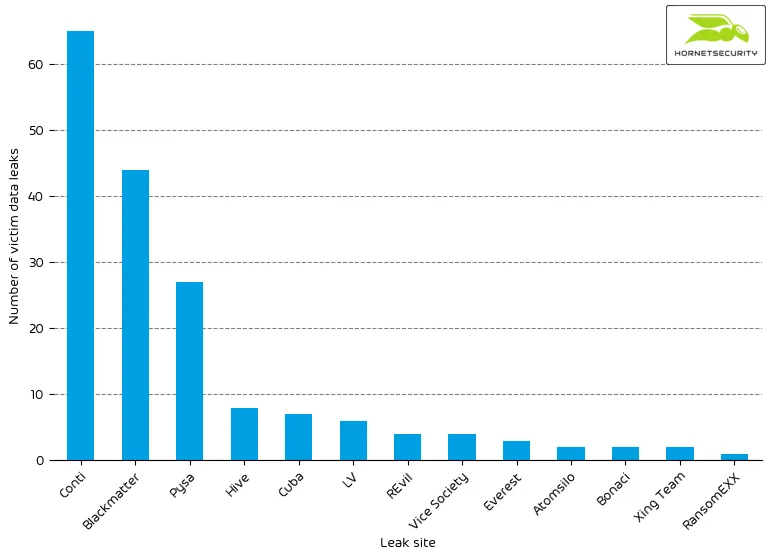
We add the following ransomware leak sites to our monitoring:
- Atomsilo
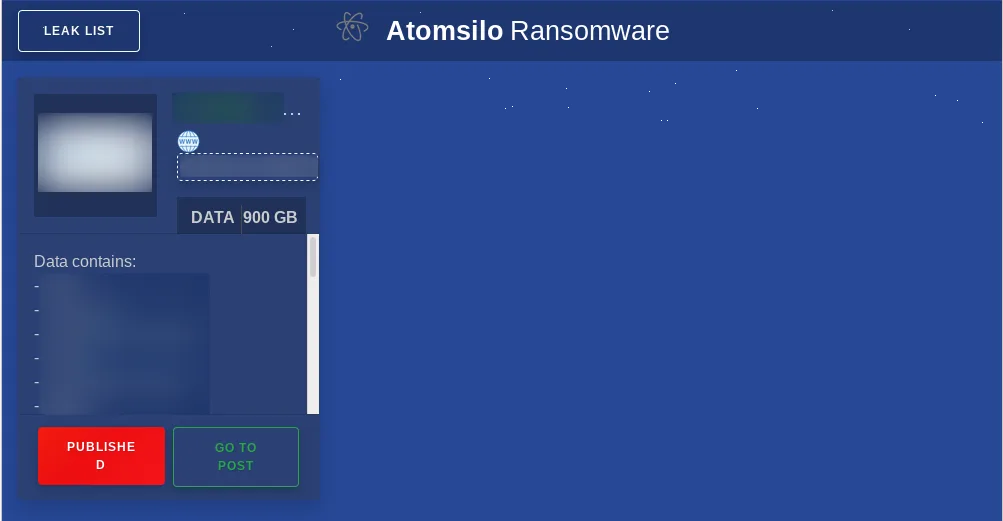
- Blackmatter
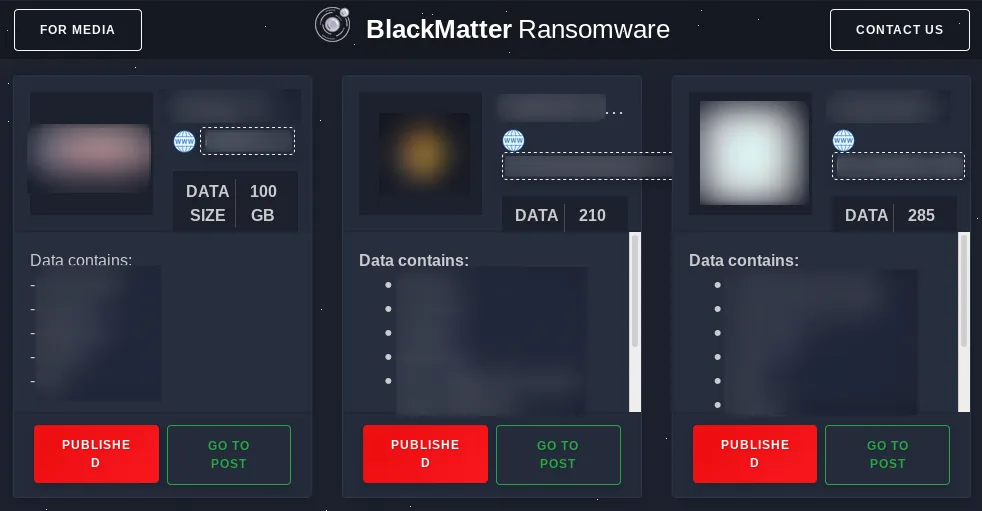
- Bonaci
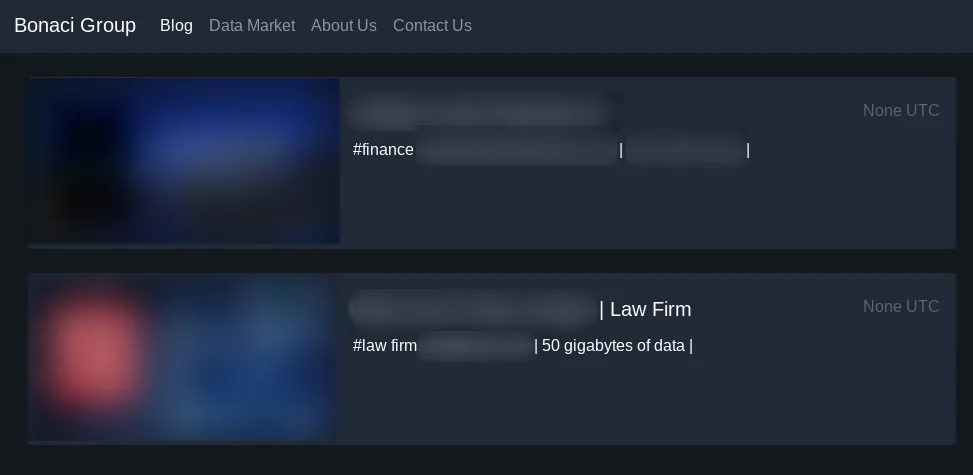
On 2021-10-04, Europol announced two arrests and seven property searches in Ukraine in relation to a ransomware gang. Europol did not name the ransomware gang.1
On 2021-10-26, Europol announced action against 12 criminals involved with LockerGoga, MegaCortex and Dharma ransomware, among others.2
On 2021-10-29, the US Justice Department announced the extradition of a Russian national from South Korea to the US for its alleged role in Trickbot malware development and deployment.3
References
- 1 https://www.europol.europa.eu/newsroom/news/ransomware-gang-arrested-in-ukraine-europol%E2%80%99s-support
- 2 https://www.europol.europa.eu/newsroom/news/12-targeted-for-involvement-in-ransomware-attacks-against-critical-infrastructure
- 3 https://www.justice.gov/opa/pr/russian-national-extradited-united-states-face-charges-alleged-role-cybercriminal

